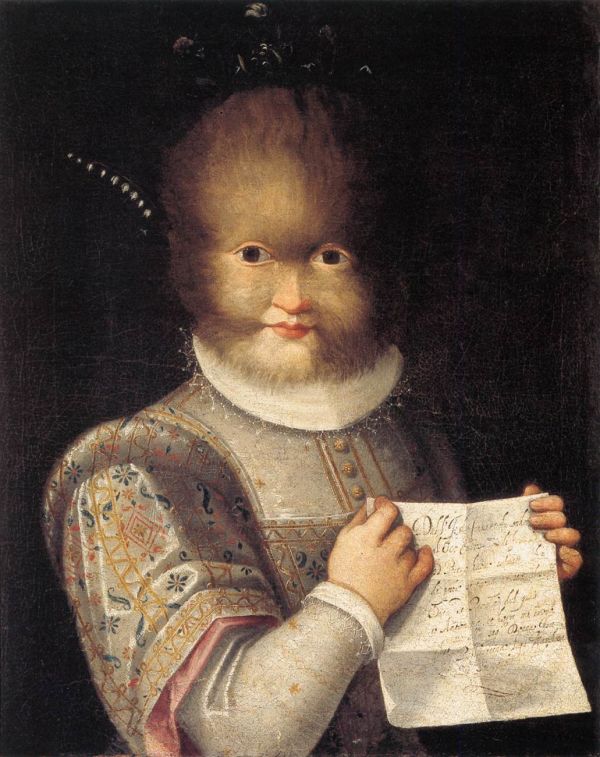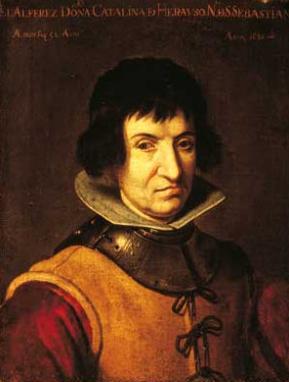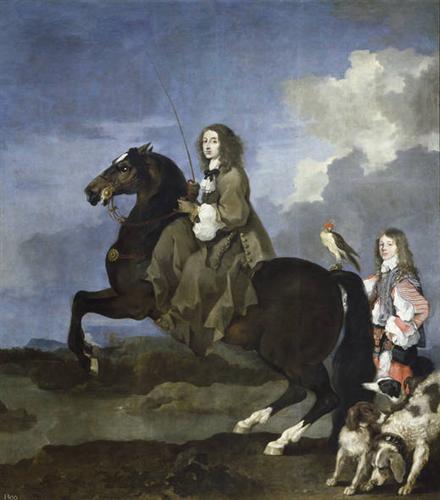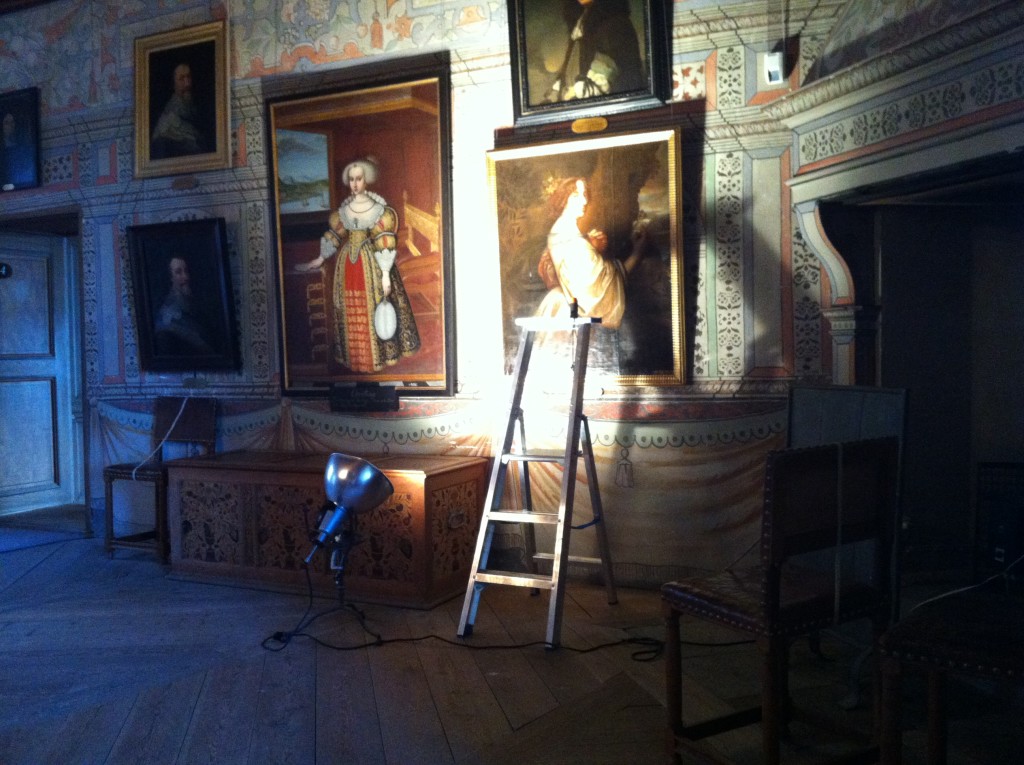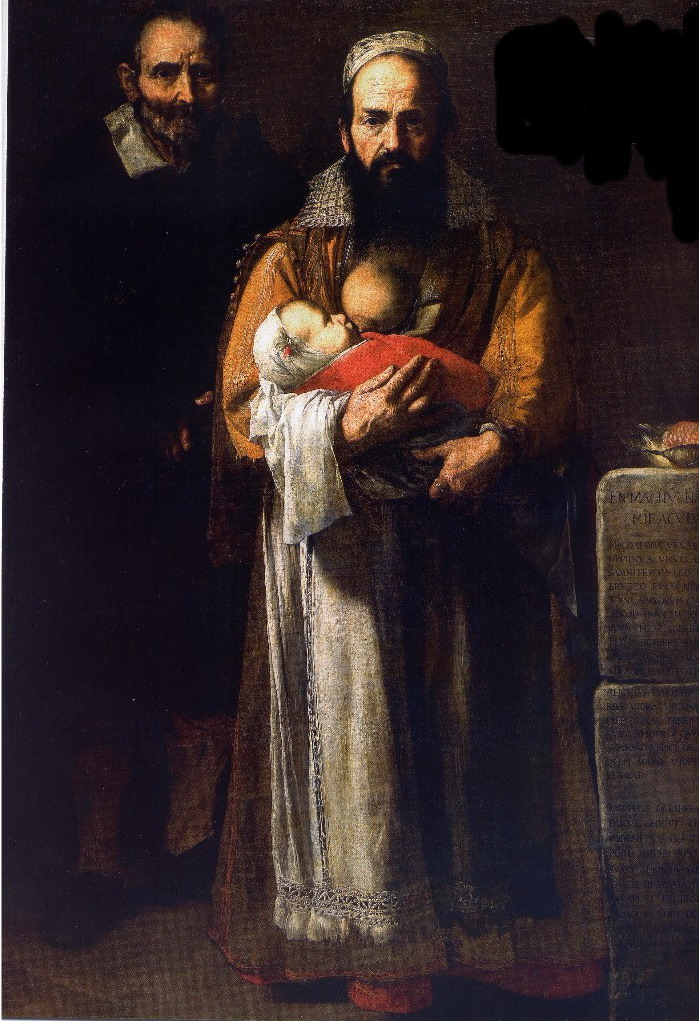Risa Puleo
Grant awarded Fall 2014
The Kossak Travel Grant allowed me to Madrid, Stockholm and Blois, France, to see three of the four portraits I am writing about for my Master’s Thesis. (The fourth, located in San Sebastian, Spain was being conserved at the time of my travels and was not available for viewing.) My thesis project is about portraits of “monsters” or those people who did not neatly fit into established categories of male and female and animal and human. It looks for the intersection between discourses of “monstrous births,” a term used to describe those born with anomalous physical features such as conjoined twins, “hermaphrodites” and the excessively hairy, and “monstrous races,” a term used to describe people from far away places thought to be more akin to animals than humans. While the four portraits I write about are “popular” because they represent people that are physically spectacular, very little has been written about them from an art historical standpoint. Thus, it was incredibly important for me to see the paintings in person, which allowed me to experience them in ways that is not communicated in reproductions.
For example, seeing how Antoinetta Gonzalez’s portrait at the Chateau Royal in Blois was displayed shifted my thinking about the place the portrait occupied in the royal collection and I began to understand that the history of collections was a fundamental component of my project.
Antonietta Gonzalez was a hirsute girl born in a hirsute family that was “collected” by Hapsburg royals at the end of the sixteenth century. Her portrait was painted by Lavinia Fontana in Bologna after the end of a long journey during which she traveled from the court of King Henri II in France to the courts of Hapsburg royals and early modern scientists in Prague, Munich, Innsbruck, Zurich, and Parma. Fontana’s portrait of Gonzalez is located at the Chateau Royal, King Henri II’s hunting palace in Blois and displayed on a pedestal in the corner of Queen Catherine de Medici’s bedroom. The display suggests that Gonzalez, with her furry face and body covered in hair–occupied the status of dog and loyal companion more so than person whose portrait would be given equal space on the wall with other portraits in the royal collection. The portrait is also displayed near the entrance to the Queen’s wunderkammer, where she kept rare and unusual objects collected from all corners of the world. Seeing the portrait in this context helped me to understand how Gonzalez would have been a living version of the objects in the Queen’s collection. The history of collecting and early modern display systems and proto-museology became an important area of research after this experience.
Jusepe de Ribera’s portrait of Magdalena Ventura is displayed among other portraits of the gente de placer at the Prado in Madrid. The gente de placer were those people, like dwarves and mad men, collected by the Hapsburg rulers of Spain in the early seventeenth century. Magdalena Ventura was brought to Naples–then a Spanish city by the viceroy to be painted by his court painter Ribera because she had a full and thick black beard. In images of the painting printed in books, the robes she wears appear to be red, a color I had associated with the iconography of Mary Magdalene. In person, however, I was able to see that the robe is actually a golden umber and her costume representative of native Abruzzo fashion.
An unexpected bonus of the trip to Madrid was the opportunity to see the royal collections in depth. At the Prado and the Royal Palace I encountered paintings of Queen Christina of Sweden, who is one of the four women I was researching. The portrait I found there was an equestrian portrait of Christina that she sent to King Philip of Spain as a gift seeking his support for her conversion to Catholicism from Protestantism. The week following my trip to Madrid, I traveled to Stockholm to see Christina’s portrait in the royal collections there. However, upon viewing multiple portraits, it became clear that the portrait in Spain was the portrait that would become the main focus of my final chapter. Traveling between Spain and Sweden and understanding the political circumstances by which the portrait came to Spain helped to put my inquiry into a broader context. The portrait shows Christina dressed as a man riding a horse in emulation of Peter Paul Ruben’s portrait of King Philip. Christina was often accused of being a hermaphrodite for her cross-dressing and self-possessed and fiery personality, attributed thought only to belong to men. I had previously thought my project was about “monsters” across Europe, but then understood it to be about how Catholic Hapsburg royals conceptualized monstrosity during the Protestant Reformation. Another component of my thesis came into focus: the four portraits I was writing about were of women who interacted with Habsburg Spain through its colonial project and international affairs.
Having to the opportunity to see these portraits in person greatly impacted my writing and put many aspects of my project into a new context. I am very grateful for the Kossak Travel Grant to allow me to have this experience.
